The role of kids TV in the classroom
Shannon Meyerkort
2 May 2024
Originally published on School News Australia
About four years ago, the Australian government made the disastrous decision to remove content quotas for locally-made children’s shows from commercial television. Made in the midst of the COVID-19 pandemic as a way to assist the free-to-air networks (Channels 7, 9 and 10) have more flexibility sourcing cheap, overseas content, the effect has been catastrophic for the local industry and viewers. The number of hours of locally produced children’s TV shows has dropped by 80 percent, from more than 600 hours to less than 100.
At the same time, the federal government gave $20 million in funding to the Australian Children’s Television Foundation (ACTF), the production and policy hub behind shows such as Round The Twist, Dance Academy and Little Lunch. The funding was aimed at keeping the sector going, by maintaining production and selling content overseas.
Massive legislative, technological, and social change has occurred over the past four years, leading to significant changes in viewing habits. A research project has been tracking those changes and their impact on Aussie kids.
Watching the watchers
Australia Children’s Television Cultures (ACTC) is a research group based at Swinburne University of Technology in partnership with the Australian Children’s Television Foundation (ACTF) and RMIT University. Over a four-year period, they have been investigating the role of Australian children’s TV and other screen entertainment in people’s lives, memories, families, and education. The findings and outcomes of this project will help to shape the future of children’s TV in Australia.
Now in the final year of its four-year survey cycle, School News spoke with ACTC Associate Professor Liam Burke about the findings to date.
“We’ve been talking to all the sectors and stakeholders – from the producers of kids TV, to teachers, to parents, to kids and cross-generational audiences – to get a sense of what role they see local kids TV serving in the current and future TV landscape,” explains Burke.
“We did a cross-generational study, where we spoke to 550 former kids TV viewers – now adults – across four generations, from Boomers down to Gen Z,” says Burke. “They all described how local television was formative in their upbringing. The shows they watched are all something they revisit and use, such as binge-watching during the pandemic, communicating with peers and referencing back to them with gifts or memes. Kids TV has very much formed a social glue in Australia.”
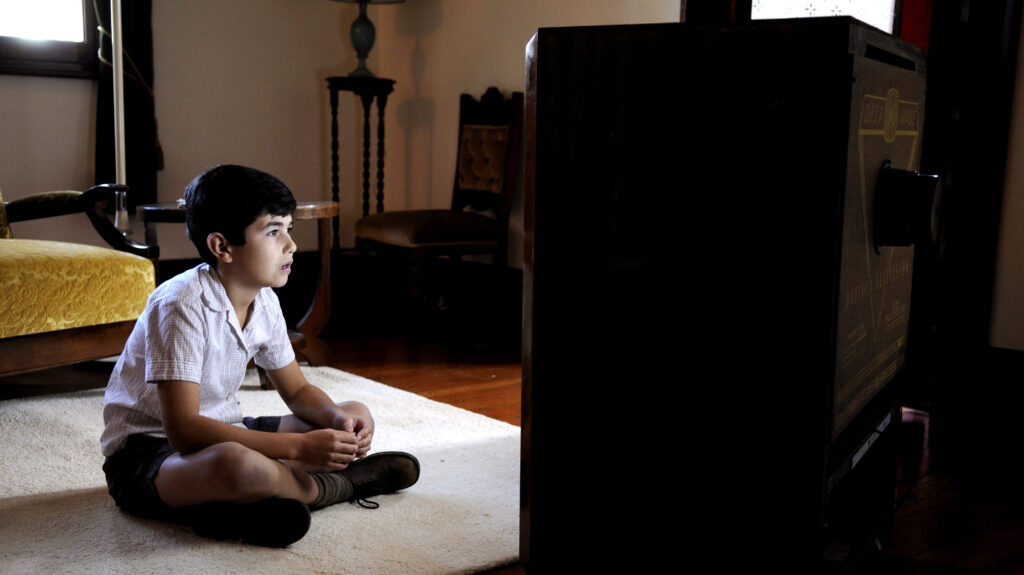
Forest for the Trees
But in surveying parents—over 750 nationwide—they have found that changes to the viewing landscape have complicated the once-simple relationship between children and television.
“Parents uniformly agree that locally-made kids TV is important. They want to see their children’s experiences reflected on screen and they won’t get that from imported shows such as Peppa Pig and Paw Patrol. But they also say that in the streaming landscape with smart televisions, and interfaces and algorithms, it’s hard to know where to go, and hard to find local kids TV outside of ABC iView. Parents want local kids TV but they struggle to find it.”
Burke explains that with everyone on their devices and less television being viewed in real-time anymore, audiences have become more fragmentary. However, he says that while this is true for the families surveyed, 9 out of 10 parents still watch at least some content with their kids. When they do, it’s usually Bluey or other all-ages content like Disney movies.
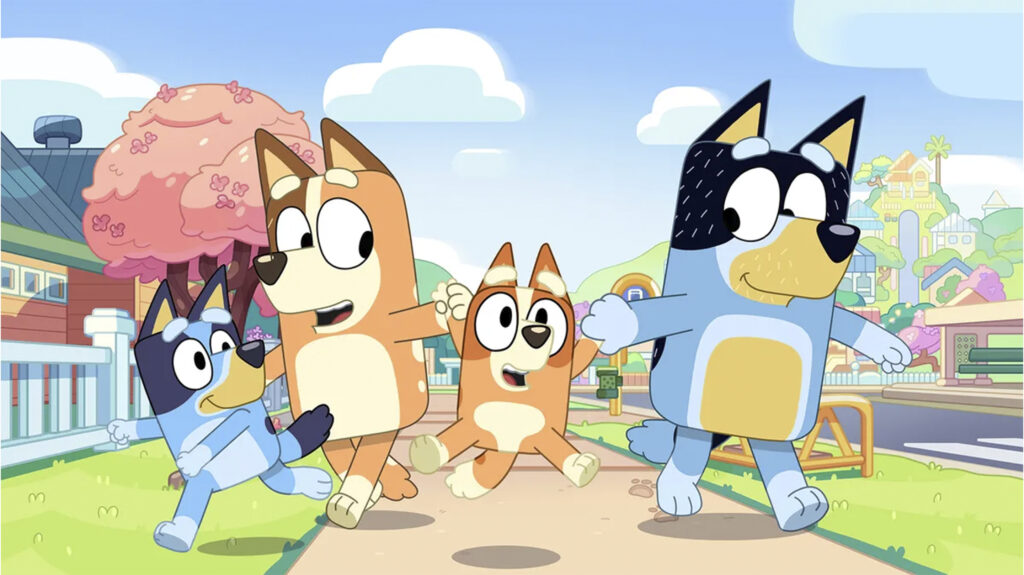
Bluey is the Gold Standard
Of the parents surveyed, Bluey is the Number 1 show for parents and kids, and the show parents are most eager to watch with their children.
There are three broad reasons for this, explains Burke. “Firstly, Bluey has a relatable family dynamic. Second, it’s unambiguously Australian and finally, it’s funny. And not just funny, but it has a particular Australian sense of humour that’s often described as larrikin sensibility. The Heelers do things their own way.”
Importantly, locally-produced children’s television, such as Bluey, is also leading the way with inclusive representation.
“I would say it outstrips adult content on just about every metric,” says Burke. “And it’s not done in a tokenistic or box-ticking way. We spoke to 20+ local kids TV producers and there is a genuine appetite to reflect Australia back on screen, and all that it implies, with a First Nations focus, characters with different levels of disability, and LGBTQI+ themes.”
Burke continues: “Australia had a show called First Day, which came out about six years ago. It’s about a trans kid going to school played by trans actor. It won awards right around the world. And local producers are consistently doing this – representation. They’re not always getting it right, and it doesn’t necessarily include everyone but I would say if you were to do an analysis between local, prime-time content produced for adults versus what is produced for kids over the past ten years, the kids shows would win out.”
Not only do locally produced children’s shows work hard to be inclusive and representative of our diverse society, but they also reflect back a lived experience that is instantly recognisable and familiar to Australian audiences. There is no snow at Christmastime and no yellow school buses.
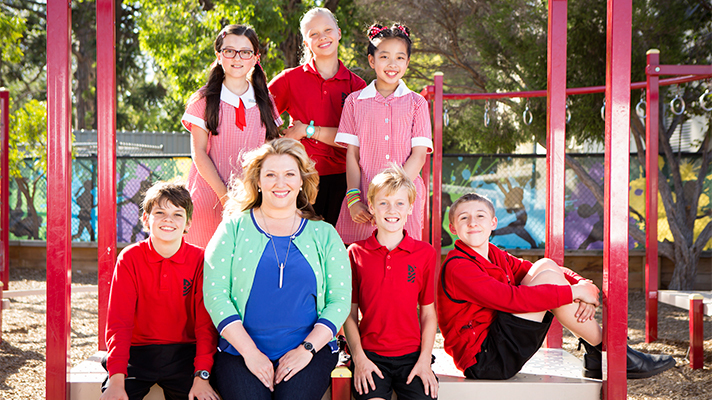
One example Burke gives is the show Little Lunch, now almost a decade old. It’s about a diverse group of kids going to a local primary school. The children wear daggy grey shorts and checked school dresses, like every other government school in the country. There are the ubiquitous wide-brimmed hats, bitumen four-square courts, and colourful paintings pegged overhead to rope in the classroom… elements that are instantly recognisable to all Australian school children, no matter where they live.
“Locally produced television recognises the need for local specificity,” Burke says. “A take-home message from Bluey and Little Lunch in the crowded screening landscape, with all the shows made with CGI looking like they could be made anywhere, is that there is an appetite for shows with character and personality, and ultimately that means cultural specificity, so the accents, the turns of phrase, the Queensland setting.”
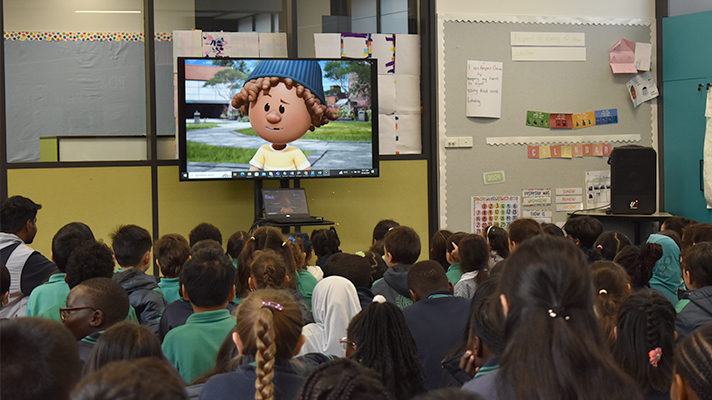
The role of TV in the classroom
One finding from the research so far, was that teachers like locally produced television content because of the local accents.
“If you’re trying to teach writing or any of those key skills, being able to show students screen content that doesn’t have American or UK pronunciation is a real boon,” explains Burke. “And also the experiences reflected in those shows are relevant. There is a Peppa Pig episode where Peppa makes friends with a spider. Perhaps that’s good advice in the north of England, but it’s not such good advice here in Australia.”
Another finding of the research may come as a surprise to educators.
“We asked parents about the role of TV in the classroom and nine out of ten felt it should have a role in the classroom. Teachers seem to worry that parents think they are slacking off, but interestingly, that sentiment is not shared by the parents we spoke to. They felt it should have a role in the classroom – an appropriate amount – but there is not a groundswell of parents thinking teachers are slacking by using TV in the classroom.”
While the Teacher’s Report is due later this year, project outcomes from the Australian Children’s Television Culture are available from the website here: Australian Children’s Television Cultures (actcresearch.com)
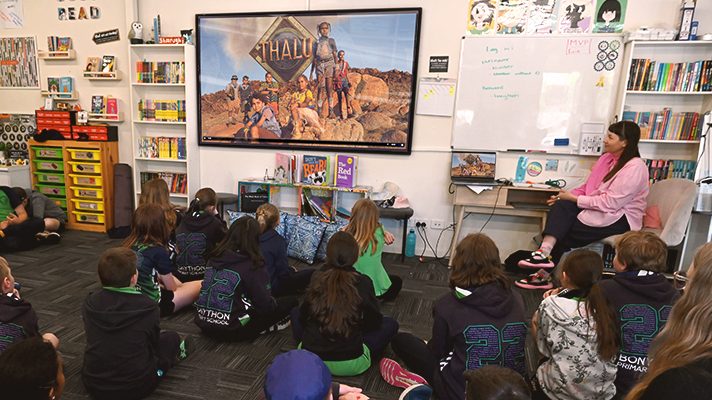
Comments
Comments for this post are open.